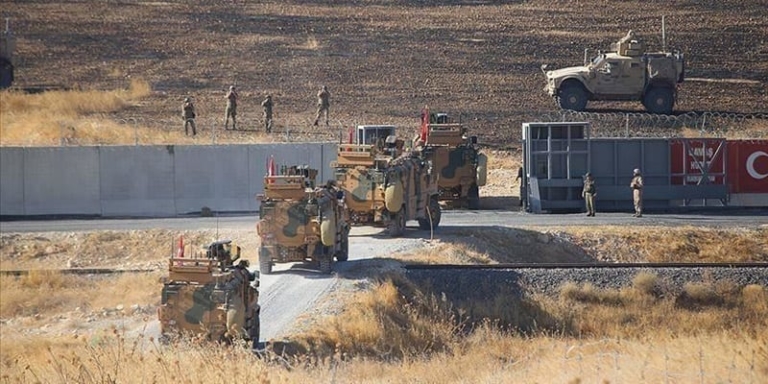
Once Again, US President Donald Trump surprised the world, especially the Syrians, with a decision to withdraw American troops from the Syrian-Turkish border and to allow for a Turkish military operation inside Syria. He made the decision after a telephone conversation with Turkish President Recep Tayyip Erdoğan.
When the two presidents talked on December 14, 2018, Trump announced that the United States would withdraw all of its forces from Syria; but a few days later he reversed his decision following objections and pressures from the Pentagon. The United States kept some 2,000 soldiers in American military bases in northeastern Syria—until March, then reduced the number to 1,000—in order to support the Syrian Democratic Forces (SDF). These are made up mostly of the Kurdish People’s Protection Units, which are considered to be affiliated with the Kurdistan Workers’ Party (PKK) in Turkey—a Kurdish militant group considered by Turkey as a terrorist organization. The PKK has fought successive Turkish governments since the 1980s.
On October 6, Trump held a telephone conversation with Erdoğan and told him that he has no objection to a Turkish military operation against the SDF inside Syria, according to Turkish sources. Between 100 and 150 American troops were in the process of withdrawing from American military installations close to the border area, especially near Tal Abyad and Ras al-Ayn. Although it is expected that for the time being, some US troops would remain deployed in eastern Syria, withdrawing other troops is understood as a harbinger of the full pullout that President Trump announced last December. The White House declared that Turkey will be responsible for the detained Islamic State (IS) fighters that the SDF currently holds, estimated to number about 11,000. It is noteworthy that the United States pays the expenses for their detention after European countries refused to repatriate their citizens who were fighting with IS, or even to help defray the cost of housing them in camps run by the SDF.
Turkey hopes that this operation will initiate what it deems a “safe zone” on the Turkish-Syrian border that extends a distance of 20 miles, one that could be used to resettle more than four million Syrian refugees who are concentrated in large urban centers like Istanbul, Gaziantep, Urfa, Callas, and others. During military and political negotiations, Turkey and the United States had discussed cooperating on erecting such a zone, but Washington always was nonchalant or rejected the idea because Trump’s overall aim was to withdraw completely from Syria.
It is apparent that President Trump made his decision without consulting his political advisors or Pentagon officials. To be sure, this decision meshes well with Trump’s unpredictable conduct in foreign policy. It led to a storm of criticism in Congress, from both Democrats and Republicans, such as Senate Majority Leader Mitch McConnell (R-Kentucky) and Senator Lindsay Graham (R-South Carolina). The latter threatened to impose severe sanctions on Turkey if it decided to enter Syria and to suspend Turkey’s membership in NATO.
This is why it is difficult for allies to anticipate the next American step in Syria or to decipher the US strategy that could protect American objectives. President Trump had announced long ago that the US policy goal was to eradicate IS, which he says has been achieved, thus allowing him to abandon Syria and disengage from the political process to end the conflict there. In effect, the American withdrawal will mean lifting the pressure off the Syrian regime in addition to ending the confrontation with Iran and Russia and freeing their hands in Syria.
It is undeniable that American policy in Syria is still without direction. Although this began years ago during the Obama Administration, Trump has effected a new level of haphazardness. This will have serious ramifications for the United States’ credibility in the region, especially with the resultant loss of military and political influence to help resolve the complex Syrian crisis—which is now more than eight years old.
Without American forces on the ground, Washington will not be able to realize its objectives in Syria, especially in confronting the Iran-affiliated militias there. There is no question that Russia and Iran will be the main beneficiaries of the new status quo, now that Turkey is part of the Astana talks (to whose provisions neither Moscow nor Tehran were loyal). Russia is threatening to help the Syrian regime’s forces in conquering Idlib, which will undoubtedly lead to a humanitarian disaster.
It would have been preferable for the United States to reach this decision after protracted diplomatic, political, and military negotiations that could have built a comprehensive strategy to guarantee certain important objectives, including the non-reemergence of IS or similar organizations and a political transition in Syria without Assad. Such a solution could have guaranteed the return of millions of Syrian refugees and the acquisition of badly needed reconstruction funds. This would have been preferable to the current shouting matches between President Trump and Turkish officials.

